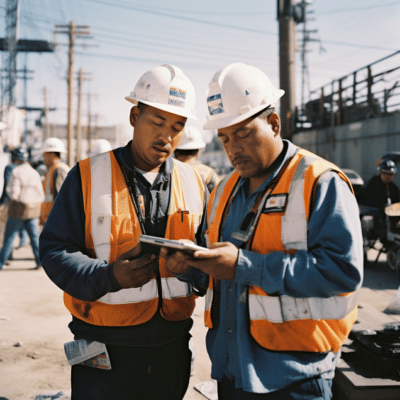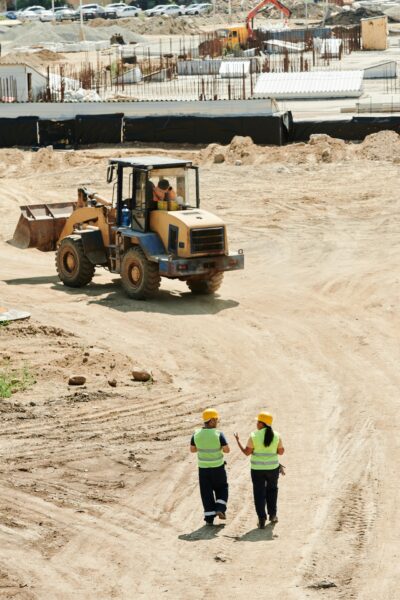In the constantly changing world of construction, technology plays a crucial role in transforming how projects are devised, implemented, and supervised. Telematics is one such groundbreaking development that has gained immense popularity in recent times.
Initially established in the automotive sector, telematics has successfully carved its niche within the construction industry, poised to revolutionize the monitoring and optimization of construction equipment operations.
IMAGE: OPTICOUS
What Is Telematics?
Telematics refers to the integration of telecommunications and informatics technologies to transmit data over long distances. In the context of construction equipment, telematics involves the use of sensors, GPS technology, and data communication systems to collect, transmit, and receive information from heavy machinery in real time. This information is then processed and analyzed to provide valuable insights into equipment performance, location, usage patterns, maintenance needs, and more.
The integration of telematics technology into construction equipment is transforming many pieces of equipment, such as the horizontal directional drill, and is revolutionizing construction operations by enabling real-time monitoring, predictive maintenance, and improved operational efficiency.
The Role Of Telematics In Construction Equipment
The incorporation of telematics into construction equipment has opened up a new realm of possibilities for construction companies and equipment operators alike. Here are some of the key ways in which telematics is revolutionizing construction equipment operations:
Real-Time Equipment Monitoring
Telematics allows construction companies to remotely monitor the location and status of their equipment in real time. This information enables project managers to allocate resources more efficiently, track equipment utilization, and optimize equipment deployment based on actual needs.
Preventive Maintenance
Telematics-enabled sensors can collect data on equipment health, including engine performance, oil levels, temperature, and more. By analyzing this data, construction companies can implement predictive and preventive maintenance schedules, minimizing downtime and reducing repair costs.
Fuel Efficiency And Environmental Impact
Telematics helps monitor fuel consumption patterns and identify instances of excessive idling or inefficient operations. This data can lead to better fuel management strategies, reducing operational costs and minimizing the environmental footprint of construction activities.
Operator Performance And Safety
Telematics provides insights into operator behavior, including speed, braking habits, and adherence to safety protocols. This information can be used to identify training needs, promote safe driving practices, and enhance overall job site safety.
Asset Theft Prevention
Through GPS tracking and geofencing capabilities, telematics can help prevent equipment theft. If a piece of equipment is moved from an authorized location, alerts can be triggered, enabling swift action to recover stolen assets.
Data-Driven Decision-Making
Telematics generates a wealth of data that can be transformed into actionable insights. Construction companies can make informed decisions regarding equipment replacement, upgrades, and utilization, leading to improved operational efficiency and cost-effectiveness.
Remote Diagnostics
When a piece of equipment experiences a breakdown or malfunction, telematics can facilitate remote diagnostics. This enables technicians to identify the issue before arriving on-site, ensuring that they have the necessary tools and parts to resolve the problem swiftly.
The Future Of Telematics In Construction
As technology continues to advance, the potential of telematics in construction equipment operations is poised to grow even further. Artificial intelligence and machine learning algorithms can be applied to telematics data to provide predictive insights, enabling construction companies to anticipate equipment failures and optimize maintenance strategies.
Furthermore, the integration of telematics with Building Information Modeling (BIM) could enhance project coordination by providing real-time equipment location data within the larger project context.
In conclusion, telematics is transforming construction equipment operations by providing real-time insights, optimizing maintenance, enhancing safety, and improving decision-making processes.
While challenges exist, the benefits of telematics are undeniable, making it an indispensable tool for construction companies seeking to stay competitive and efficient in the modern construction landscape.
As the construction industry continues to embrace technology, telematics stands out as a driving force behind the evolution of construction equipment management and operations.
IMAGE: PEXELS
If you are interested in even more technology-related articles and information from us here at Bit Rebels, then we have a lot to choose from.


COMMENTS